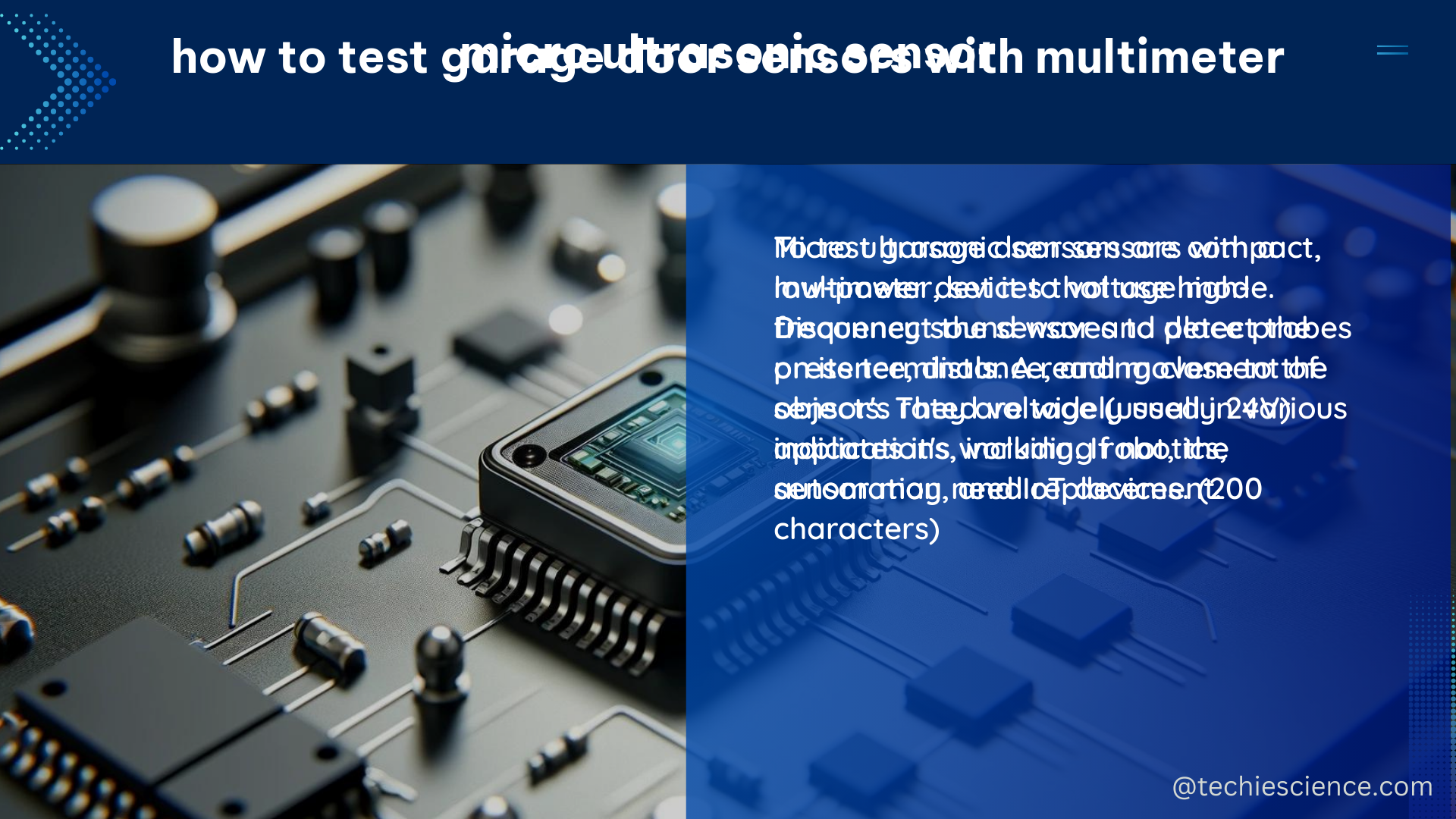Micro ultrasonic sensors are compact and versatile transducers that convert electrical signals into ultrasonic waves and vice versa. These sensors are widely used in distance measurement applications, leveraging their ability to accurately track the time it takes for an ultrasonic wave to travel to an object and back. The HC-SR04, a popular micro ultrasonic sensor, boasts a measurement range of 2cm to 400cm with an impressive accuracy of 3mm.
Understanding the HC-SR04 Micro Ultrasonic Sensor
The HC-SR04 micro ultrasonic sensor features four essential pins:
- Vcc: The operating voltage pin, which should be connected to a 5V power source.
- Gnd: The ground pin, which should be connected to the ground.
- Trig: The signal transmitting pin, which should be connected to a digital pin on the microcontroller.
- Echo: The bounced-off signal sensing pin, which should also be connected to a digital pin on the microcontroller.
Triggering the Sensor
When the Trig pin is set to HIGH for at least 10 microseconds, the HC-SR04 sensor transmits a short ultrasonic burst. This burst is then reflected off the target object, and the Echo pin outputs a pulse proportional to the distance of the object.
Measuring the Distance
The duration of the Echo pulse can be measured in microseconds using the pulseIn() function in Arduino. To convert this duration to distance, the speed of sound in air must be taken into account.
The speed of sound in air is approximately 343 meters per second at room temperature (20 degrees Celsius). However, since the sensor measures the round-trip time of the ultrasonic wave, the distance is calculated by dividing the duration by two and then multiplying by the speed of sound in air. The formula for calculating the distance in centimeters is:
distance_cm = (duration / 2) * (34300 / 10000)
Where distance_cm is the distance in centimeters, duration is the duration of the pulse in microseconds, and 34300 is the speed of sound in centimeters per second.
Accuracy Considerations
It is important to note that the accuracy of the HC-SR04 sensor decreases as the distance between the sensor and the object increases. Additionally, the sensor may not perform optimally in environments with high levels of background noise or temperature fluctuations.
Advanced Features and Capabilities

The HC-SR04 micro ultrasonic sensor offers several advanced features and capabilities that make it a versatile choice for various applications:
Adjustable Beam Angle
The HC-SR04 sensor has an adjustable beam angle, allowing users to customize the sensor’s detection area. This feature is particularly useful in applications where the sensor needs to be positioned in a specific orientation or where the detection area needs to be tailored to the specific requirements of the project.
Low Power Consumption
The HC-SR04 sensor has a low power consumption, making it suitable for battery-powered or energy-efficient applications. The sensor typically draws less than 15 mA of current during operation, which is relatively low compared to other distance measurement technologies.
Wide Operating Voltage Range
The HC-SR04 sensor can operate within a wide voltage range, from 3.3V to 5.5V. This flexibility allows the sensor to be used with a variety of microcontrollers and embedded systems, including Arduino, Raspberry Pi, and others.
Compact Size
The HC-SR04 sensor has a compact size, measuring only 45mm x 20mm x 15mm. This small footprint makes it easy to integrate into various projects and applications, where space is a critical factor.
Compatibility with Microcontrollers
The HC-SR04 sensor is compatible with a wide range of microcontrollers, including Arduino, Raspberry Pi, and others. This compatibility allows for easy integration and seamless implementation in a variety of projects and applications.
Applications of Micro Ultrasonic Sensors
Micro ultrasonic sensors like the HC-SR04 find applications in a wide range of industries and projects, including:
- Robotics and Automation: Micro ultrasonic sensors are commonly used in robotic systems for object detection, collision avoidance, and navigation.
- Smart Home and IoT: These sensors are employed in smart home devices, such as automated lighting, security systems, and smart appliances, to detect the presence and distance of objects.
- Industrial Automation: Micro ultrasonic sensors are used in industrial automation processes, such as level monitoring, object counting, and proximity detection.
- Automotive: Ultrasonic sensors are integrated into modern vehicles for applications like parking assistance, blind spot detection, and collision avoidance.
- Agriculture and Horticulture: Micro ultrasonic sensors are used in precision farming and greenhouse automation to monitor soil moisture levels, plant growth, and other environmental factors.
- Medical and Healthcare: These sensors find applications in medical devices, such as ultrasonic imaging systems and non-invasive monitoring tools.
- Environmental Monitoring: Micro ultrasonic sensors are used in environmental monitoring applications, such as water level monitoring, weather stations, and air quality monitoring.
Conclusion
Micro ultrasonic sensors, exemplified by the HC-SR04, are powerful and versatile tools for distance measurement and object detection. With their compact size, low power consumption, and wide range of applications, these sensors have become indispensable in a variety of industries and projects. By understanding the technical details and capabilities of micro ultrasonic sensors, developers and hobbyists can leverage these powerful tools to create innovative and efficient solutions.
References
- “Size of data from Arduino ultrasonic sensor” – Reddit
- “Measuring the Speed of Sound With Arduino Microcontroller and Ultrasonic Sensor” – Instructables
- “Suggest an ultrasonic sensor” – Arduino Forum
- “Ultrasonic Sensor HC-SR04 and Arduino – Complete Guide” – How to Mechatronics
- “Getting Distance in Inches and Cm from Ultrasonic Sensor in Arduino” – Stack Overflow

The lambdageeks.com Core SME Team is a group of experienced subject matter experts from diverse scientific and technical fields including Physics, Chemistry, Technology,Electronics & Electrical Engineering, Automotive, Mechanical Engineering. Our team collaborates to create high-quality, well-researched articles on a wide range of science and technology topics for the lambdageeks.com website.
All Our Senior SME are having more than 7 Years of experience in the respective fields . They are either Working Industry Professionals or assocaited With different Universities. Refer Our Authors Page to get to know About our Core SMEs.